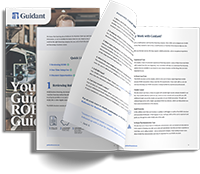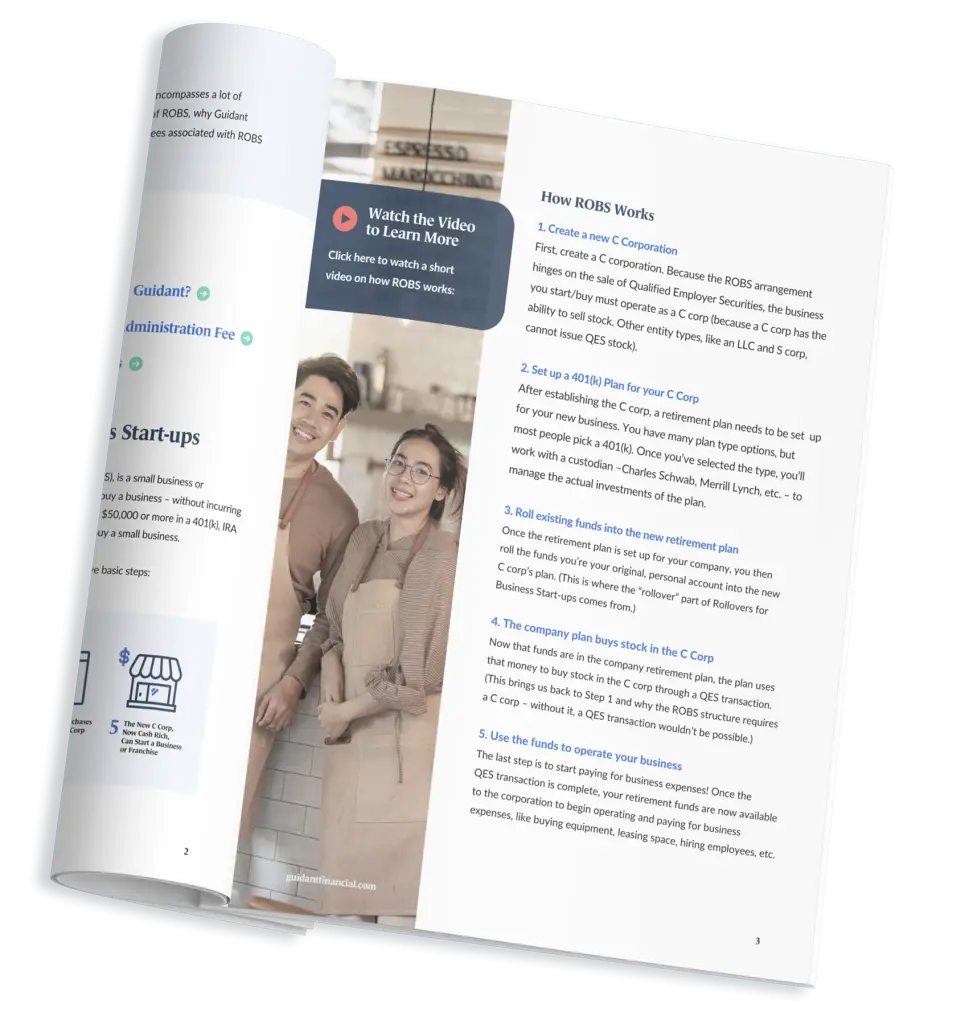Deciding how to finance your business in its early days is one of the most important decisions you’ll need to make. It can affect everything, from how you run and structure your business to how much capital you have to play with. Eighty percent of startups fail, so it’s essential that you make a strong start.
If a traditional business loan isn’t for you, you’re probably interested in self-funding. Thankfully, there are various tried and tested personal business funding options you can consider. In this guide, we’ll break them down in easy-to-understand language to help you determine which is best.
Overall Pros of Funding Your Business Personally
- Your access to finances is unaffected by debt history or credit score.
- There’s no one else around to contest your decisions (though for some, this is a con).
- You retain 100% of your business — you don’t have to give an equity stake to an investor.
- It’s easy to supplement with additional sources of funding down the road.
Overall Cons of Funding Your Business Personally
- If you don’t know what you’re doing, nearly every decision — from what business structure to choose, to what potential customers to target — can require extended self-education. Do you have that time and bandwidth?
- In the beginning, it can be easy to accidentally mix your personal finances with your business finances, creating serious accounting and tax troubles down the road.
Bootstrapping (Using Your Own Cash)
What Is Bootstrapping?
Bootstrapping is a type of self-financing where a new business owner starts a company using their own personal funds, rather than outside investments and venture capital. Bootstrapping businesses will also utilize the income from their initial sales. While less risky than a bank loan, the bootstrapping process is considered extremely challenging.
The term ‘bootstrapping’ comes from the metaphor of an entrepreneur pulling themselves up by their bootstraps to get their business idea off the ground. Before choosing the bootstrapping business model, you will need to consider the following factors:
- Personal Debt: Debt is likely to rise through the use of personal or business credit cards.
- Personal Financial Risk: The risk of failure can sometimes mean you won’t get your money back.
- Owner Financing: You will be using your own personal savings and income to cover business expenses.
- Sweat Equity: How much time and energy you will need to put into the business.
- Operating Costs: Start-up costs will likely need to be as low as possible.
- Inventory Minimization: Fast and efficient inventory turnaround may be required.
- Subsidy Finance: Government-related expenses.
- Selling: What sales figures are needed to keep the business funded?
Pros of Bootstrapping
- Entrepreneurs keep full ownership and control of their business. Whereas if you use an outside investor, you would need to give up a percentage of ownership in exchange.
- Bootstrapping owners tend to create sustainable business models that bring in revenue, as it’s the only route to survival.
- Extra satisfaction is felt having succeeded in creating a business out of your pocket only.
- No monthly payment on a loan.
- Business owners retain direction at all times, with minimal external pressure. This can be especially beneficial for entrepreneurs with a vision that they want to keep protected.
Cons of Bootstrapping
- Bootstrapping businesses are at risk of running out of funds quickly and tend to have small emergency buffers. This is the notorious cash flow issue: lack of regular monthly cash flow means your growth may be stunted early on.
- A bootstrap start-up may struggle to scale, limiting its ability to grow and increase its potential.
- Using your own funds may limit your networking opportunities. Including interested investors and shareholders, who may unlock doors and ideas you wouldn’t consider alone.
- Book-keeping, accounting, and organizing alone are time-consuming and high-pressure.
- Bootstrapping entrepreneurs often take on many tasks with limited resources, which increases the workload considerably.
Successful Bootstrapping Examples
The following companies all started with the use of solid bootstrapping strategies:
- Apple
- Coca Cola
- Hewlett-Packard
- Meta (formerly Facebook)
- Microsoft
- eBay
You’re Right for Bootstrapping If:
- You have a solid understanding of business or are willing to learn.
- You have a service-based business that requires little up-front investment.
- You already have high-quality service skills (the skills you are essentially selling).
- Your business model doesn’t require you to scale quickly.
Borrowing Money from Friends and Family
Due to close personal connections, family and friends are often a more realistic route to external funding than institutional investors. In the U.S., 38% of startups are funded by family and friends.
If you have a wealthy family, this option may be particularly viable. However, it’s important to consider that friends and relatives may be unreliable or cause conflicts in the future. Money from family is often money with strings — either legal or emotional — attached.
Family and Friends Funding Business Plans
When relying on family or friends to self-finance your new business, you will need to consider:
- Cash Gifts: Is your friend or relative willing to become a patron without a return on their money?
- Investments: Will they expect to gain something, such as part ownership, equity, interest on the loan, or a share of future profits?
- Choose a Structure: Family and friend investments can be structured as debt, convertible debt, or equity investments. You might also consider a partnership structure.
- Document Everything: Treat it like any other financial transaction and consider using contracts to ensure there are no misunderstandings later on.
Pros of Self-Financing with Family and Friends
- It may prove a lifeline for anyone struggling to find angel investors.
- Access to funds is often immediate.
- Minimal due diligence and paperwork are required compared to corporate investments.
- Flexibility over agreement terms and pay-back requirements.
- Wealthy family or friends may be willing to fund you through a donation rather than a personal loan.
- You can avoid losing ownership.
Cons of Self-Financing with Family and Friends
- Relationships can become damaged due to conflicts, especially if terms aren’t clearly defined upfront or if you struggle to pay them back on time.
- Agreeing to equity investments can prove extremely expensive over time if you misjudge the valuation of your business.
You’re Right for Friends and Family Funding If:
- This isn’t your first business — and the others were fairly successful.
- Your family has the extra capital to spare.
- Your need for capital isn’t overly large.
Crowdfunding
What Is Crowdfunding?
Crowdfunding sees customers donate their money to help fund a business idea they’d like to see become a reality. Crowdfunding has rapidly grown in popularity as a viable self-financing business plan over the past decade.
In 2019, there were over 6.4 million worldwide crowdfunding campaigns. On average, successful crowdfunding campaigns raised $28,656.
Crowdfunding Methods
- Donations and Reward Crowdfunding: Individuals either donate to the business or exchange capital for a non-financial reward, such as perks like exclusive products. This is the form of crowdfunding you’re used to hearing about. Popular platforms include Kickstarter and IndieGogo.
- Investment Crowdfunding: Funders invest a relatively small amount in exchange for equity shares of the company. This can lower the barriers for individual investors but comes with federal regulations, rules, and exemptions.
Pros of Crowdfunding as a Business Owner
- Funders finance your product or service.
- Concentrate your investor discussion into a centralized place.
- Avoid giving up equity, as investors are rewarded with perks rather than a stake in the business.
- You can rapidly test and build the market for audience interest.
- Crowdfunding creates momentum, as the commitment of funders attracts other investors.
- Crowdfunding can raise significant amounts of capital due to large numbers of funders.
- You can get a snapshot of how your business will fare in the long run.
- Crowdfunding can act as a massive accelerating boost for new startups.
Cons of Crowdfunding
- You may struggle to get your startup seen by audiences on the crowdfunding platform, leaving you with no investors.
- Crowdfunding requires a lot of extra work and expenses, such as professional videos and marketing.
- Crowdfunding can be expensive if you rely on perks and rewards to attract funders.
- Negative feedback can be emotionally taxing and sometimes fatal to a new business idea.
- You have to grow as a business in a very public manner.
- Crowdfunding sets a deadline for when you need to deliver, which may be detrimental to your long-term progress.
Examples of Successful Crowdfunding Startups:
- Oculus (raised $2.4 million through Kickstarter).
- Exploding Kittens (the most-backed Kickstarter of all time, with over 219,380 backers).
- Flow Hive (raised over $13 million, after an initial target of $17,000).
You’re Right for Crowdfunding If:
- You are comfortable with digital content production, including a variety of video and visual assets.
- You are comfortable using social media.
- You are selling a physical product.
- Your customer base is niche and passionate.
Rollovers as Business Startups: Using Your Retirement Funds to Cover Costs
What is Rollovers as Business Startups?
Rollovers as Business Startups (ROBS) are arrangements where new business owners use their 401(k), IRA, or other retirement funds to self-finance their business. This works by rolling the owner’s existing retirement accounts into a 401(k) plan connected to your new business.
Pros of Rollovers as Business Startups
- Self-finance your business without the need to rely on business loans or personal loans that call for strong personal credit, collateral, and positive cash flows for approval.
- You can avoid taking on debt, as there are no monthly repayments, high-interest fees, or defaulting to worry about.
- ROBS avoids the penalties and tax implications that usually come when taking funds directly from a 401(k) or IRA before turning 59 years old.
Cons of ROBS
- You risk losing your retirement nest egg if your business fails.
- The ROBS structure requires strict rules to avoid audits by the IRS and Department of Labor.
- You’ll have to operate as a C corporation, which may not be a good fit depending on your business type.
- You can’t do it by yourself; you’ll need the help of a credible ROBS provider.
You’re Right for ROBS If:
- You have $50,000 dollars or more in a retirement account
- You’re not just looking for an investment — you actually intend to work and take a salary from the business.
- You already have expertise with the type of business you intend to open.
Can You Mix Self-Financing Options to Raise Capital?
You don’t need to limit yourself to just one type of funding option. Many successful businesses use multiple financing routes, including using a personal loan, a small business loan, family financing, crowdfunding, and the use of their own personal assets.
It may be wise to consider alternate funding ideas outside of your savings, as doing so will reduce the burden on yourself and give you more capital to work with. These options include debt financings such as SBA bank loans, portfolio loans, or seller financing. You might also consider equity financing options like venture capitalists, venture capital firms, angel investors, or other forms of capital from investors.
Should I Self-Fund My Employees’ Health Insurance?
A successful business may also need to consider implementing health insurance plans for its employees.
A self-funded health insurance arrangement is a type of employer-sponsored healthcare that avoids dependency on traditional insurance carriers. Premiums are paid to the employers, which are used in the event of medical claims.
The appeal of self-funded insurance is that your business can keep any premiums that aren’t spent on claims. However, the danger is that you risk greater expenses. While in one year you may save money, you may face large overruns in the next.
For very small businesses, a self-funded insurance arrangement may be suitable. But it’s often advised that you carry a stop-loss insurance coverage that protects you against large claims.
Contact Guidant for Advice
Small business financing doesn’t have to be complicated. If you need financial advice to help get your dream off the ground, contact Guidant.
We specialize in helping small business owners find the best type of financing for their circumstances and goals, from SBA Business Loans to 401(k) Business Financing.
Our experts can help you with every step to secure the funding needed to start your business.
















